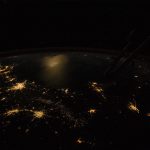
Thailand possesses one of the world’s most choice geographies. Jungle mountains ring its lands, limiting the influence of neighbors and outside colonizers alike. Its capital, Bangkok, commands the northern end of the broad Gulf of Thailand, making it the natural center of gravity of the broader region.
Located in the Chao Phraya River delta, Bangkok is the economic lifeblood of Thailand, and the heart of the country’s investment and development. Nearly half of the country’s GDP is concentrated in the Bangkok metropolitan area, and the city alone accounts for 30 percent of Thailand’s GDP. Bangkok’s economy is healthily diversified, with strong retail and finance sectors and considerable manufacturing throughout the metropolitan area, including the largest automotive industry in Southeast Asia.
Originally a swampland, the area was drained and irrigated for agriculture through the creation of canals in the 16th century. This created an intricate network of waterways that served as the primary mode of transportation and earned the city the moniker, “Venice of the East,” until modern roads began to be built in the 19th century.
Bangkok often taps interior Thailand for markets, labor and resources with the Khorat Plateau serving as the primary provider. This relationship is often perceived by the citizens of the interior as exploitive — Bangkok boasts a per-capita GDP three times greater than the national average — and guarantees a degree of internal political tension that sharply limits Thailand’s ability to venture beyond its rich, safe lands.
For more on the rising role of Thailand, see Chapter 9 of The Accidental Superpower.




